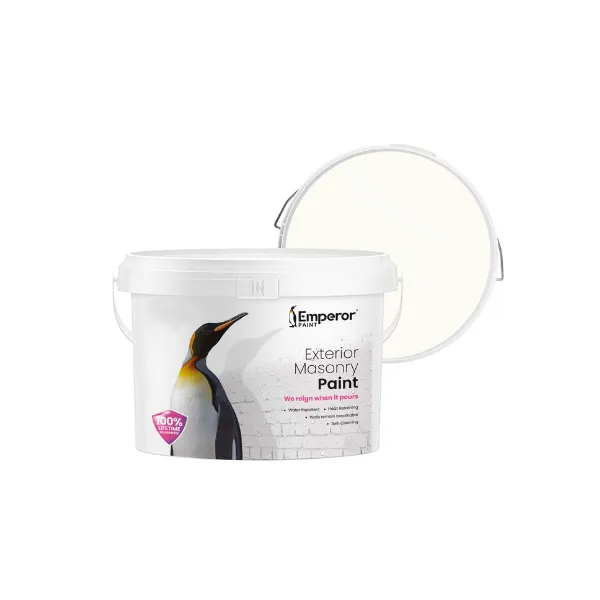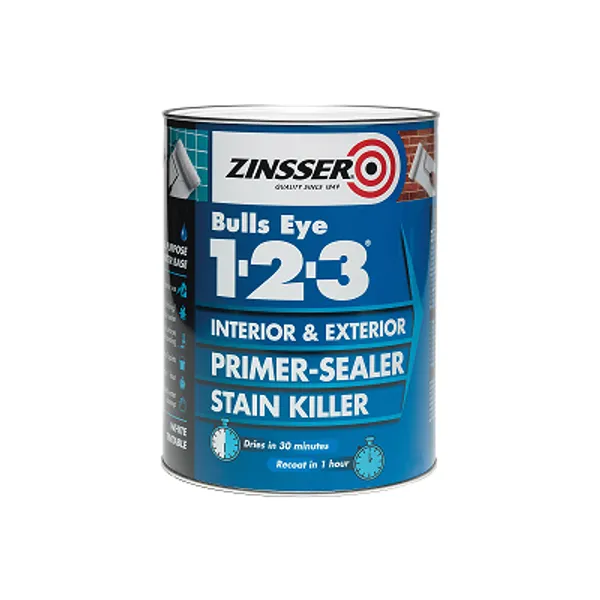Painting Exterior Brick - The Ultimate Guide
When it comes to painting exterior bricks, there is a large amount of confusing information that can cause you a real headache. That is why our experts have put together this complete guide to painting exterior brick so you will know everything you need to know.
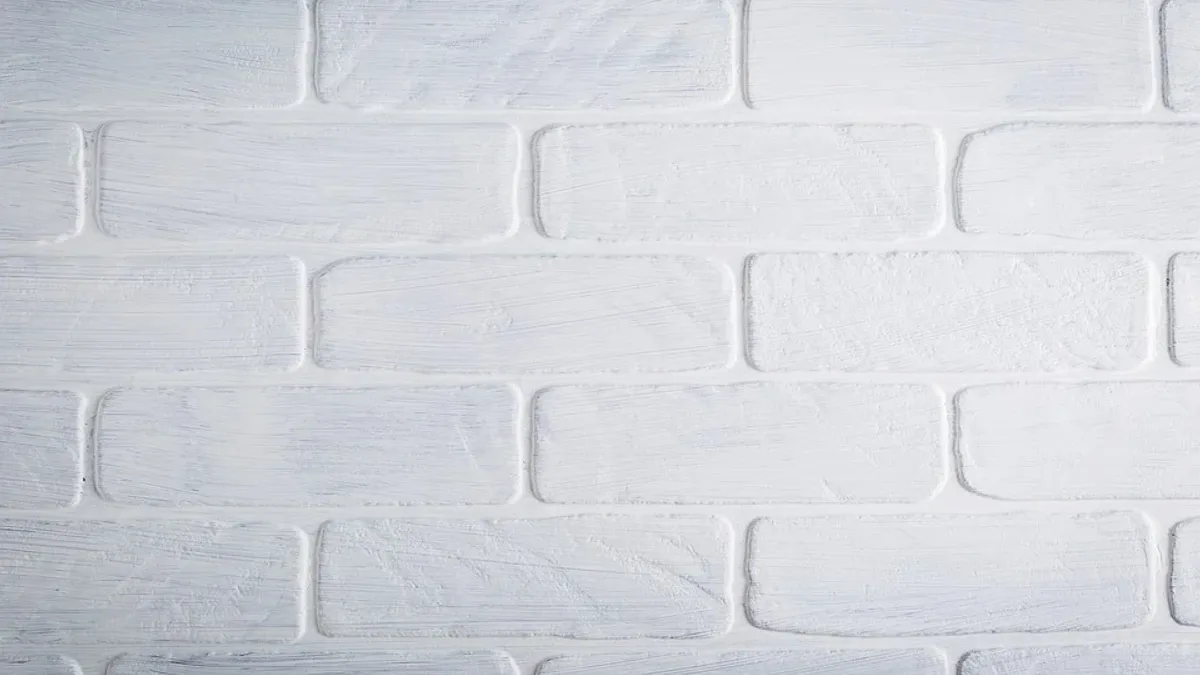
Can You Paint Bricks?
Firstly, let's answer the question of whether you can paint exterior bricks or not. As with almost every exterior surface, such as wood, UPVC & metal, exterior bricks can be painted if they are properly prepared beforehand. Whether an exterior wall to a property or a garden wall, bricks are a perfect opportunity to add a unique twist to your property, with many people preferring a coloured finish rather than plain brickwork.
The paint that has been specially designed to be applied to exterior walled surfaces such as concrete, stone & brick is masonry paint, which offers weather resistance and the ability to adhere to these mineral surfaces. These paints come in a range of forms but are generally water-based and come with a lifespan of 5-10 years, with some having a lifespan of 25 years or more. While masonry paints usually offer some form of weather resistance, they are not all waterproof. This is why some masonry paints are now designed to be completely water repellent, preventing moisture from causing the paint to peel or flake, giving the paint a longer lifespan and preventing issues such as damp & discolouration.
Should You Paint Bricks?
Now we have established that you can paint bricks, the next question is whether this is a good idea or not. Many people have suggested that you should not paint bricks for a number of reasons, with the main two reasons being:
- Non-breathable paint can destroy the brickwork, causing both structural and aesthetic issues
- Once painted, it can be difficult to go back to a bare brick finish, although it is possible
The truth is that people cite the application of non-breathable paints to brickwork that causes moisture to become trapped underneath the paint film, which will damage brickwork. This is correct, as non-breathable masonry paints or brick sealers should never be applied to bricks.
You may be wondering what is a breathable masonry paint? Breathability refers to the ability for a paint to allow water vapour to transfer through the paint film. Contrary to popular belief, bricks are actually porous, meaning they absorb moisture. If a paint is not breathable, moisture cannot escape from within the brickwork. When this moisture gathers underneath the paint, it can cause the brickwork to become damaged and will almost certainly result in the failure of the paint. Breathability is measured by an SD value, with an SD below 1 meaning a paint is considered breathable. While a large number of masonry paints have low breathability, there are a number of masonry paints on the market in the UK that ensure complete breathability.
On the other hand, there are a number of reasons why you may choose to paint your bricks:
- Fantastic kerb appeal - adding colour to your property is an excellent way to add kerb appeal, which can even add some value to it
- Protects masonry - painting your brickwork can in fact protect the masonry. A waterproof masonry paint will prevent moisture from attacking the brick and mortar, stopping the faces of the brick blowing and cracks opening up that can accentuates the problem further
- Easier to clean - as bricks are porous, they can absorb moisture and discolour due to this. Furthermore, dirt can become deeply ingrained in the masonry which can be difficult to clean. A smooth masonry paint will allow the exterior wall to be cleaned much more effectively. If a masonry paint is water repellent, it is self-cleaning as dirt cannot attach to the surface, just like moisture
Overall, using a cheap masonry paint will cause problems due to moisture ingress, which will lead to the paint film failing within a matter of years. If you are choosing to paint brick, we highly recommend you use a high-quality advanced masonry paint that will prevent moisture from getting underneath the paint and that is completely breathable.
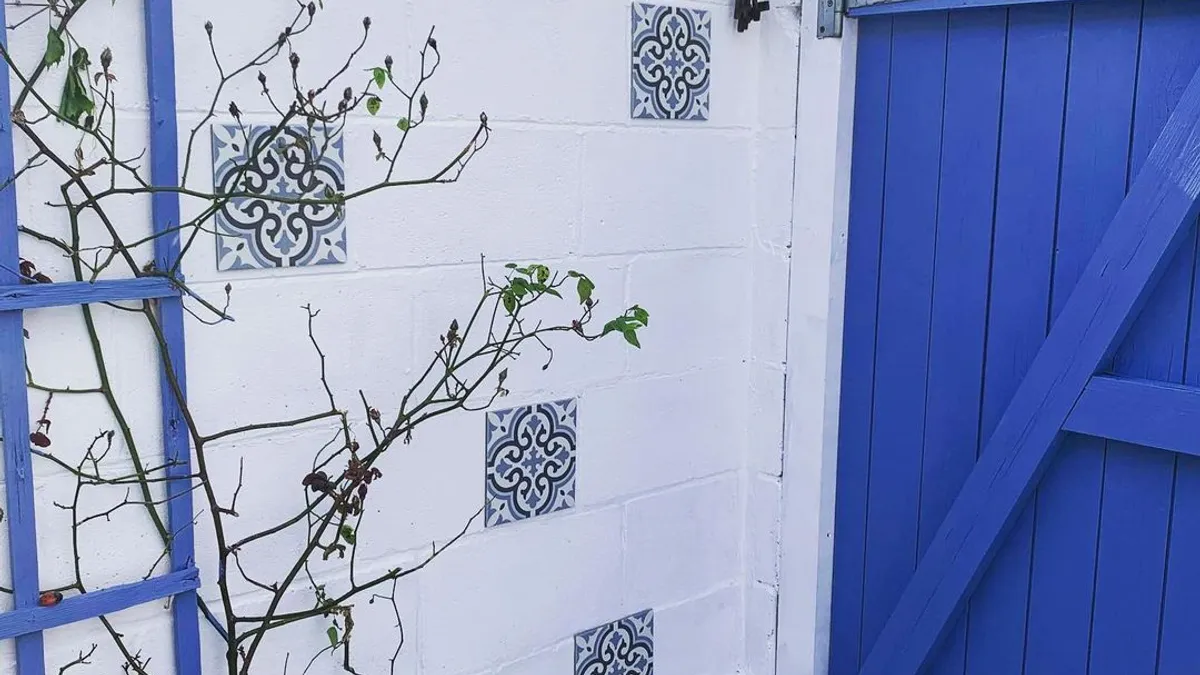
What Is The Best Paint For Brick Walls?
Paint
When it comes to the best paint for exterior brick walls, our experts would recommend Emperor Masonry Paint. It contains the latest nano-technology that creates a super hydrophobic coating on masonry which allows it to completely repel water while remaining completely breathable. In a 25 year accelerated weathering test, it was shown to not change in performance or appearance for the full 25 year test, demonstrating a minimum 25 year longevity.
This super hydrophobic surface also means it is self-cleaning and by keeping masonry dry. Tests showed it keeps surfaces 6°C warmer on average, as wet building materials transfer heat much more than dry materials.
Thanks to its performance in tests, Emperor Masonry Paint comes with a lifetime guarantee as it has been proven to withstand any weather conditions for decades without peeling or allowing moisture to absorb into the brick.
Available in 12 popular standard colours, including white, off-white & light grey.
An alternative option if you are looking for a non-traditional or darker colour is Armstead Masonry Paint, which offers excellent value for money if you are looking for a standard masonry paint. It can perform for up to 15 years and is shower resistant in 30 minutes. Not only this, it can be mixed in almost any colours thanks to our paint mixing service.
To get a custom mixed colour, simply find the right shade you are looking for by scrolling through our RAL & British Standard colour charts or simply type the shade you are looking for in the text box on each product page. For example, if you would like this mixed in 'Dulux Minted Grey', just type that in the text box and our machine will mix it.
Armstead Masonry Paint is ideal for those smaller exterior brick projects where you may want a unique colour and do not need the longevity you may require if you are undertaking a full exterior wall project. Although it doesn't have the other benefits of waterproof paints, it does offer better performance than the average masonry paint.
Primer
When painting bare brick walls, it is crucial to prime first to allow the masonry paint to properly adhere for maximum performance. You can use a variety of exterior primers, with Zinsser Bullseye 1-2-3 being a fantastic all-rounder.
If you are planning to use a waterproof masonry paint such as Emperor Masonry Paint, you must ensure that you use the correct primer with this to provide you with full water repellent properties. Use Emperor Paint Exterior Masonry Primer before applying Emperor Masonry Paint and benefit from their lifetime guarantee.
This is due to the fact that a standard exterior primer is not super hydrophobic, meaning it would not provide full water repellency like the masonry paint.
How To Paint Exterior Brick
So you now know what the best paints for exterior brick are. Let's talk about how exactly to go about painting!
Step 1: Preparation
If you do not ensure the surface is ready to paint, the paint will struggle to adhere. Start by checking that the brick has no cracks or holes in, as these must be filled to create a smooth surface to be painted. Firstly, all rubble must be removed from the crack or hole as this will prevent the filler from adhering. Using an exterior filler such as Toupret Touprelith F Masonry Repair Filler, fill all holes or cracks using a filling knife. Work the filler up and down in straight lines until the hole is slightly overfilled to allow for any shrinkage. Once this has been done, you can then sand the filler down to create a completely smooth surface.
Once the surface is completely sound, it must then be cleaned before you can paint it. Using a stiff brush, wipe down the brickwork to remove any large parts or dirt and dust. Once this has been done, apply a masonry cleaner such as an anti-fungal cleaner to kill any green growth or fungus that can grow and cause the paint to fail. Simply brush the cleaner on and leave for a few hours to dry. You do not have to wash this off as any residue left will be covered with the paint.
Put dust sheets down and mask around the surface you are painting using masking tape to ensure the neatest possible results. If you are painting an exterior wall, wrapping newspaper around gutters and downpipes can save you time.
2. Priming
When painting a bare surface like brick, you must apply primer before you paint. The primer acts as a glue to allow the paint to adhere as easily as possible to the surface.
Primer comes in a thin, milky liquid that can be very easily applied using a paint brush or roller. It is crucial at this point to ensure you are using the correct tools for the job. When painting a rough exterior surface like a brick wall, you are much better off using a long-pile roller. Long-pile rollers have long fibres on the roller sleeve that allow more paint to be picked up at once and applies that paint more effectively on rough surfaces as it can reach all of the nooks and crannies. A masonry brush can also help to better apply paint, although you can use any synthetic paint brush that you are comfortable with.
Apply a thin but even layer of primer on to the brick and leave to dry as per the manufacturers instructions. This is usually around 3-5 hours in normal temperatures but will vary in colder or warmer weather.
3. Painting
Now the brick is cleaned and primed it is time to paint. It's important that you ensure you are not painting in conditions below 5°C as this will impact the ability for the masonry paint to dry. This is because most masonry paints are water-based, meaning the water struggles to evaporate to dry the paint when in cooler temperatures. If you are planning to paint in cooler conditions, it is possible to use an oil-based masonry paint like pliolite, although this is not recommended for the average DIY'er.
Beginning at the top of the wall, work around the edges using your paint brush, followed by the roller to paint the rest of the surface. The first coat of paint should be thinner than your second coat as the aim is to provide a solid base for the topcoat to be applied to, rather than achieve strong opacity.
Once the full area is painted, leave to completely dry before applying the second coat.
Once dry, apply your second coat slightly thicker than your first coat. Most good masonry paints are two coat systems, so you should try to apply this coat as evenly as possible to achieve your final finish. If you are using a cheap masonry paint, it may require a third coat, which you can apply once the second is dry.
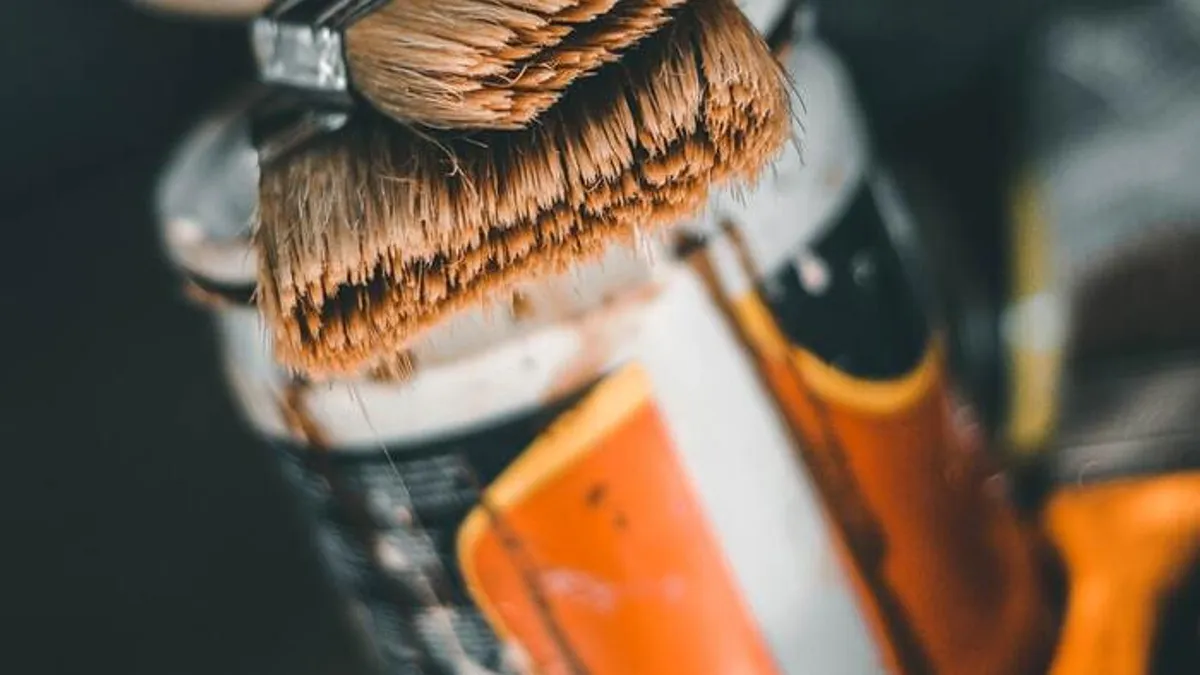
Frequently Asked Questions
Q. Is there any other treatments for exterior bricks rather than paint?
If you do not want to alter the appearance of your bricks but would like to protect them from moisture that causes damage, there are a number of waterproof coatings available. The best of which is masonry cream, which is a clear coating that once applied to brick penetrates into the material rather than creating a film on the outside like a paint. This allows the brick to repel water in the same way as waterproof masonry paint while maintaining a natural brick appearance.
Q. Can you seal painted brick?
When people refer to sealing brick, they are talking about a waterproof coating that prevents water ingress. Some people have confused treatments like masonry cream for sealers, in the same way you would use a varnish to topcoat wood.
Masonry cream is applied to bare brick to waterproof it, while painted brick cannot then be sealed, as this would prevent the brick for breathing. That is why waterproof masonry paint was developed in order to both paint brick and offer waterproof protection in one solution. In no circumstance should you apply a sealer over the top of painted brick. In this scenario you should you a waterproof masonry paint to paint over the previously painted brickwork.
Q. Can you use a waterproof paint over normal paint?
Yes, waterproof paint can be painted over the top of a standard masonry paint and still ensure that it remains completely water repellent.
Q. How long does painted brick last?
The brick will remain painted as long as the paint is sound. Masonry paints have a lifespan from 1 year all the way to 25+ years. We would recommend that you opt for a high-quality paint no matter if you are painting exterior brick, woodwork or an interior wall. While a cheaper paint will cost you less upfront, in the long-term this is a false economy as you will have to pay for new paint and tools again when the paint fails.
Q. What does painted brick look like?
Painting brick can create a hugely attractive look that can make your property stand out.
The beauty of any paint whether applied to wood, metal or brick is that it creates a strong uniform finish. While bare brick offers more variety of colours which can give a rustic feel, painted brick can provide a beautifully modern look, especially with greys such as anthracite grey or with blacks such as jet black that have become hugely popular. Stuck on what colour to choose? Why not have a look at our full range of masonry paint colours?
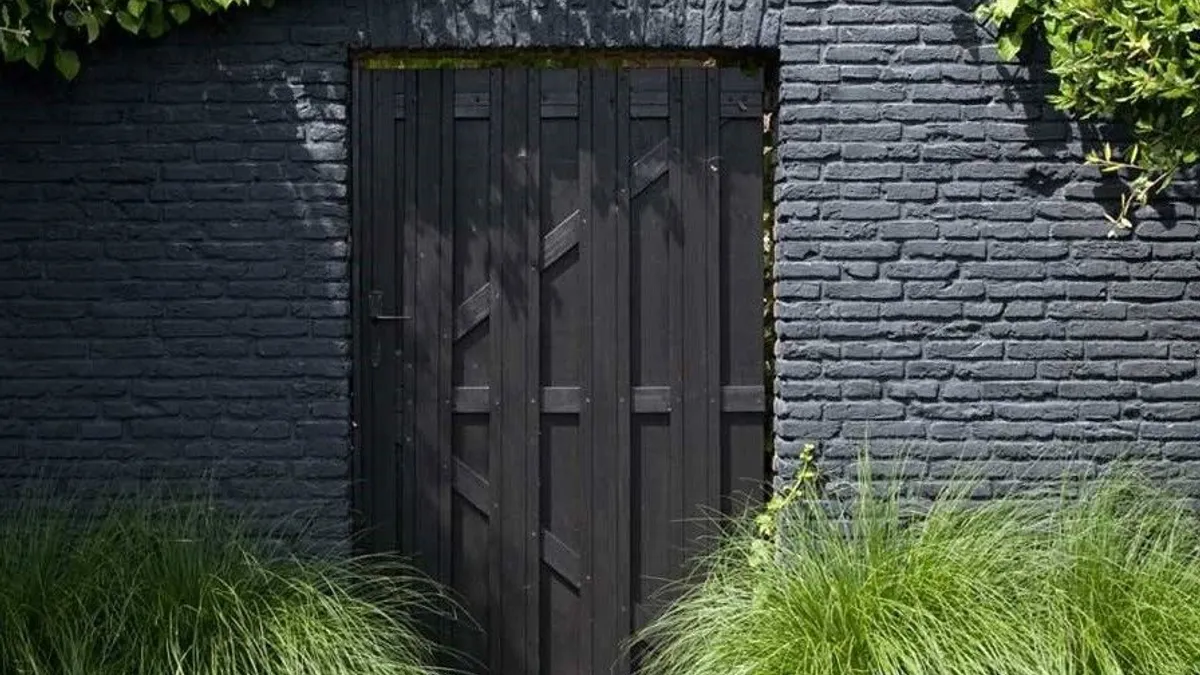
We hope this has answered any questions you may have had regarding painting exterior brick walls. At Painters World we have a wide range of trade paint, decorating tools & supplies available, so no matter the job, we've got everything you need! Shop our huge range of products today & get FREE next working day delivery on all orders over £50.



Sign up now and be the first to know about exclusive offers, product updates, and announcements.


